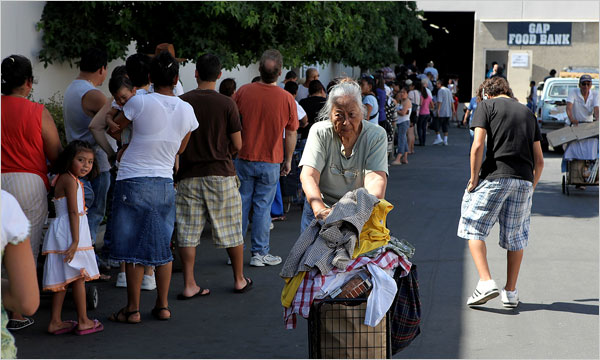
Climate change is likely to impede progress on reducing undernourishment around the world in the decades ahead, according to a major scientific assessment by the U.S. Department of Agriculture (USDA) on global food security. The report, entitled Climate Change, Global Food Security and the U.S. Food System, identifies the risks that climate change poses to global food security and the challenges facing farmers and consumers in adapting to changing climate conditions.
In the absence of response measures, climate change is likely to diminish continued progress on global food security through production disruption that lead to constraints on local availability and price increases, interrupted transport conduits, and diminished food safety, among other causes. The risks are greatest for the global poor and in tropical regions.
Climate risks to food security increase as the magnitude and rate of climate change increase. Higher emissions and concentrations of greenhouse gases are much more likely to have damaging effects than lower emissions and concentrations. The author team reviewed a range of scenarios. Under scenarios with continued increases in greenhouse gas emissions the number of people at risk of undernourishment would increase by as much as 175 million above today’s level by 2080.
Effective adaptation can reduce food system vulnerability to climate change and reduce detrimental climate change effects on food security, but socioeconomic conditions can impede the adoption of technically feasible adaptation options. The agricultural sector has a strong record of adapting to changing conditions. There are many opportunities to strengthen agricultural economies and bring more advanced methods of crop production to low-yielding agricultural regions. Other promising adaptations include reducing food waste through innovative packaging, expanding cold storage to lengthen shelf life, and improving transportation infrastructure to move food more rapidly to markets.
The USDA’s 10 Building Blocks for Climate Smart Agriculture is a comprehensive set of voluntary programs and initiatives that is expected to reduce net emissions and enhance carbon sequestration by over 120 million metric tons of CO2 equivalent by 2025 – about 2 percent of economy-wide emissions. The ten “building blocks” span a range of technologies and practices to reduce greenhouse gas emissions, increase carbon storage, and generate clean renewable energy.
In California, the Brown Administraton and CDFA are embracing Climate Smart Agriculture by adhering to three main pillars:
- Sustainably increasing farm productivity and incomes.
- Adapting and building resilience to climate change.
- Reducing/removing greenhouse gas emissions, where
possible.
Programs to help achieve this include the Healthy Soils Initiative, the State Water Efficiency and Enhancement Program (SWEEP), and the Dairy Digester Research and Development Program.
‘Climate Change, Global Food Security and the U.S. Food System’ was prepared as part of the United States National Climate Assessment and part of the President’s Climate Action Plan. USDA led the production of the report on behalf of the thirteen Federal Agencies of the U.S. Global Change Research Program. Thirty-one authors and contributors prepared the report, representing nineteen federal, academic, nongovernmental, and intergovernmental institutions in four countries.
Executive Summary, Climate Change, Global Food Security, and the U.S. Food System
Full Report: Climate Change, Global Food Security, and the U.S. Food System


